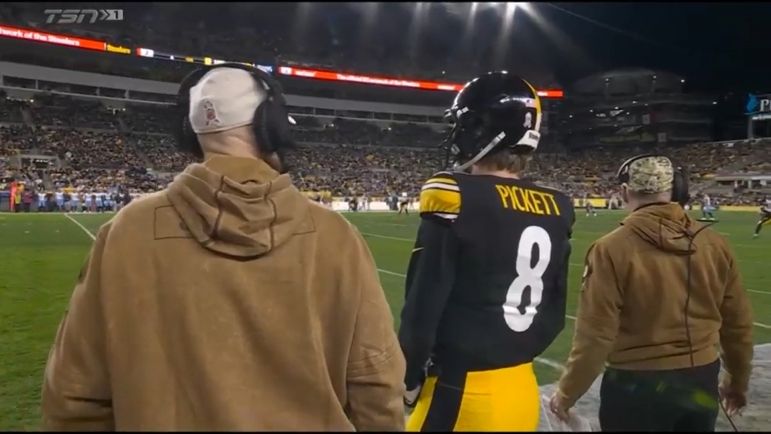The Pittsburgh Steelers have not had a lot of success in the passing game in 2023. They rank in the bottom five in passing yards per game, passing touchdowns, and first down rate on passes. They also rank in the bottom ten in team passer rating, completion percentage, and 20-yard plays. The only bright spot is the lack of interceptions, just six, but even that is just above average.
There’s been a lot of discourse regarding whether Matt Canada and the playcalling are setting up Kenny Pickett to succeed. Let’s take a bit of a deep dive and look at the different types of dropbacks the Steelers have run this season, and at what rates. All data is per Sports Info SIS and via NoFlagsFilm on Twitter.
We see a few interesting things at first glance here. The Steelers use the 3-step drop a lot, second most in the league. On the other end, they don’t use much of the 1-step drop, ranking bottom ten in the league, and really never use the RPO or the 7-step drop, at a combined rate of less than 5% of their dropbacks.
The 3-step drop and the 1-step drop are the two most used types of dropbacks in the league. Is there a reason the Steelers use one so much and hardly use the other? Let’s take a look.
First the 3-step drop. It’s been used by the Steelers a whopping 48.8% of the time this season. In a word, it’s been respectable. They generate 5.5 net yards (so sacks count as negative) per dropback when running the 3-step, which is a solid 17th in the league, and they complete around 61% of their passes, a mark that sneaks them in the top half of the league at 16th.
Well, you might be asking yourself, the Steelers certainly haven’t had even an average passing offense this season, so where’s the drawback? Well, naturally when you run the 3-step drop, it’s going to put your quarterback under pressure a lot. The Steelers have allowed pressures on 42.6% of their 3-step drops this season, 7th highest in the league. However, credit to Kenny Pickett, it’s led to a sack rate of under 9%, which is right around the league average. And the pressure hasn’t been too much of a detriment, as like I pointed out above, their league average net yards per dropback already takes the sacks into account.
Now, let’s look at the 1-step drop statistics, and fair warning – this is ugly. The 1-step drop is all about getting the ball out quickly and connecting on short, safe passes to move the ball down the field. Naturally, this leads to the 1-step drop having higher completion percentages league-wide, at 68.4% compared to the 3-step drop rate of 56.0%. Well, not for the Pittsburgh Steelers. Somehow, defying all logic, the Steelers have a higher completion rate on 3-step drops than 1-step drops. In fact, their 1-step drop completion rate of just 60.45% is dead last in the league. Their net yards per dropback of 4.17 isn’t much better, ranking 30th.
It’s been somewhat of a safe option for them, as they only have one interception and one sack on 54 dropbacks, but it hasn’t been effective in any other sense. For a quarterback like Pickett who can’t drive the ball down the middle field quite as much as fans might like, this type of play is crucial. Defenses are certainly daring Pickett to beat them with anything but the quick stuff, but even so, their metrics are so abysmal it’s hard to chalk it all up to that.
If Pittsburgh wants to beat good teams consistently, they need to establish a quick passing game. Whether that means Pickett needs to keep teams honest deep, or the playcalling needs to change. How they adapt remains to be seen, but something has got to give.








